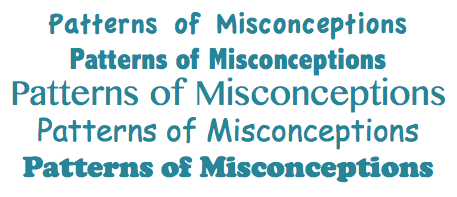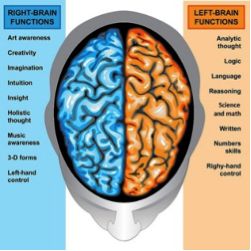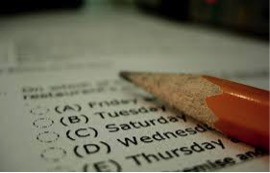by Dana Melone, Cedar Rapids Kennedy High School
This school year, I had the unique opportunity to continue to teach the Psychological Sciences as well as a course on Brain Based Study Techniques. As part of the psychology curriculum, I have always had a unit that taught students the various cognitive biases as well as how they impact their lives. In talking with my Study Technique students this year and reading their reflections in class on our lessons and how they are applying them to their classes, I noticed a common trend. They are making these cognitive errors in their own thinking and it was hurting their studying and learning.
I took this bit of anecdotal evidence and had students examine their own biases after their quizzes, exams, and course interactions. My hope was that this process would help them develop awareness of their own biases in their thinking and in turn help guide their future thinking and behaviors. It is not enough to just be metacognitive, but students must also be aware of when they might be relying on a biased interpretation of their studying and learning. The hope is that students will learn to recognize that bias has influenced their thinking and make adjustments as needed.
Targeted Cognitive Biases
There are over 50 cognitive biases that psychologists consider when they examine thinking, but I chose 3 of the biases to have my students examine:
- Cognitive Dissonance: Cognitive dissonance occurs when we have a belief and we in turn do something that goes against that belief. That produces internal cognitive discomfort for us, so we develop an excuse to make ourselves feel better. Excuses can be truthful but they can also be non truths we tell ourselves to get over the discomfort. The most common way I saw this occurring with my students was after doing poorly on an exam.The students knew they should be getting help when needed and studying in the right way. When they did not do that thing, they often claimed that the teacher disliked them, they did not have time to use better study techniques, or the test was so hard no one could have passed it.
- Self-Serving Bias: This occurs when we attribute good things that happen to us as a result of our own actions and in turn, negative things that happen to us are attributed to an external cause. I saw this with my students in our discussions as well. When students succeeded on a quiz or test they were almost always attributing that to their study method, understanding of the material, and ease of the test. When they did poorly, they talked about the test having things on it they did not study, or that teacher purposely created hard exams, etc.
- Overconfidence: This bias occurs when we think we know more than we really do. We overestimate our ability on something. It can occur multiple ways, but my focus was post exam. Students receive a quiz or test score and really think they are about to get a great score. Instead, their score was much lower than they were expecting. I would often see students talk about this in their reflections. They would really think they knew the material and were shocked that they did not score well on the exam.
Overcoming the Biases
Once I realized that students were making these types of cognitive errors, I taught a lesson on the errors and we went over various examples. I then added an analysis of these biases to their weekly reflections of their classwork, test, and quiz outcomes.
- Cognitive Dissonance: Think about cognitive dissonance and the three phases: I have a belief, I do something that goes against that belief, I develop an excuse to relieve the discomfort. This class is all about using correct learning, studying, and communicating techniques to improve our learning outcomes. This knowledge about effective learning represents our beliefs. In reflecting on your week, did you engage in behaviors that did not align with those beliefs and then fall victim to this bias? If so, explain. Then describe how you will help yourself overcome this in the future. If you feel you did not fall victim to this bias, provide commentary on how you overcame it with an example from your week.
- Self-Serving Bias: Examine your reflection of the week. Choose a positive element from your reflection and explain how others helped to contribute to your success. Choose a negative element from your reflection and explain what you personally could have done differently to help change the outcome.
- Overconfidence: Did you have any tests or quizzes this week that produced a lower score than you were expecting? If so, what could you have done differently in your preparation that may have helped you avoid overconfidence?
The goal of adding these questions was to help students think about ways their own cognitive errors may be contributing to their studying, learning, and assessment scores. Metacognition is best when we also incorporate awareness of possible bias and errors in our cognitions. My hope is that students will think about these biases as they move through high school and life, and that in turn they will use that thinking to become better learners in all their courses.



